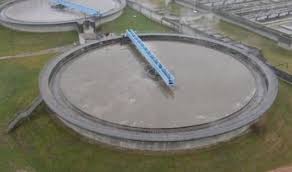Articles
Oct 01, 2020 - THE WASTEWATER TREATMENT PROCESS
What is Wastewater?
Wastewater is classified as used water from any combination of domestic, industrial, commercial, agricultural activities, surface runoff, or storm water.
The wastewater treatment process removes the contaminants from the wastewater and converts it into an element that can be returned to the water cycle with minimum impact on the environment. Water can carry harmful diseases and bacteria, making it important for it to undergo this treatment before it is returned to homes and businesses.

How does the wastewater treatment process work?
1. Travel
The wastewater travels through the large main sewer system underground to the wastewater treatment plant. As it reaches the plant, the water will be screened to remove any large items or debris from the sewage.
2. Preliminary Treatment
At this stage, the sewage is forced through the grit chamber. Water makes its way from large screens to small screens, removing objects as small as a match.
3. Grit Removal
The water is then pumped into sedimentation tanks to separate the components of the sewage even further. This removes all remaining grit from the water to be disposed of as it cannot be reused due to high contamination.

4. Primary Treatment
The water flows into primary settling tanks, and is guided towards the hopper in the base of the tank. During this, the hopper arm moves around the edge of the tank. This allows for the treated water to move towards the edges and the sedimentation to flow and settle at the bottom of the tank.

5. Secondary Treatment (biological stage)
The wastewater treatment plant will use bacteria to consume contaminants, carbon, phosphorous and biodegradable organics. This will turn into sludge, excess sludge is pumped out and moved to the digestion tanks for further treatment before the water will enter the settling tanks.
Digestion Tanks Sludge is heated and mixed. Biogas is produced during this process from the sludge. Wastewater treatment plants can reuse this for electrical and thermal energy production. Water is then separated from the sludge and taken back for further treatment.
7. Disposal of sludge
All of the sludge gathered is disposed in a sanitary landfill. After about a month sludge will be dried out enough to use for agricultural reasons such as fertilization of industrial crops.
8. Disinfection and Deep Inspection
The final step to the treatment plant undergoes a thorough inspection to analyze the contamination level. They make sure the treated water is acceptable to the highest standards. If the water passes this inspection it can be reused for domestic or industrial purposes.
For disinfection, treated water (also known as effluent) is sent through a chamber or series of reservoirs to allow sufficient time for chemicals or light to kill bad microorganisms that have not been removed. This effluent is now called ‘reclaimed water’ and is released back to the environment for beneficial purposes.
Wastewater treatment plants must reach a certain quality standard at the end of this process. In order to have this quality, they must make sure they stay up to date on maintenance and equipment. This equipment can be heavy and hard to maneuver.
Maintenance
In order to ensure high-quality water at the end of the treatment process, the plants must make sure that their equipment is well kept and they are up to date on all maintenance. Davit cranes are typically used for lifting, lowering, and/or positioning equipment at a treatment plant. Most commonly, they are used for maintenance purposes of submersible pump/mixers, WAS/RAS pumps, chopper pump maintenance, UV bulb replacement on UV Modules, lifting trash baskets for disposal, or positioning stop logs/dam gates.
Both jib and davit cranes can be used to accomplish this. While both can get the job done, a davit crane is better suited to complete this task.
A jib crane has a trolley with a winch or hoist, because of this it cannot be operated from the back of the crane. A davit crane is easier to operate as you do not need to be at the load to operate the davit crane system. All operations happen at the back of the crane which makes operation safer and more straightforward. Davit cranes offer manual or power operated options (AC, DC, pneumatic, or hydraulic operation) to swiftly lift pumps for maintenance or repair.
Web Design & Development by Web Masters Corp.

